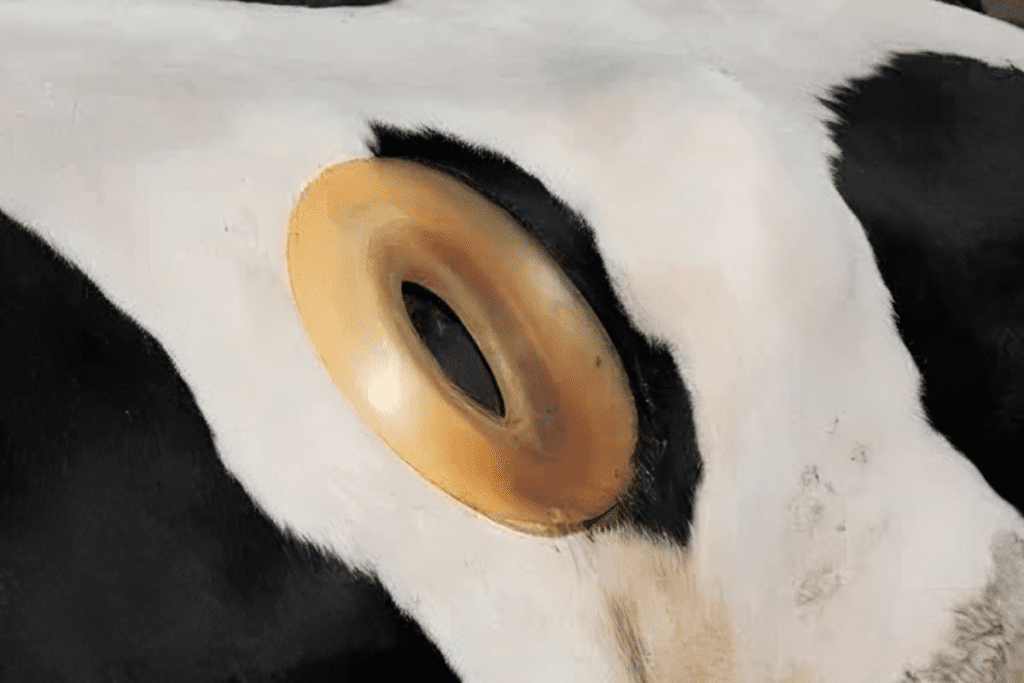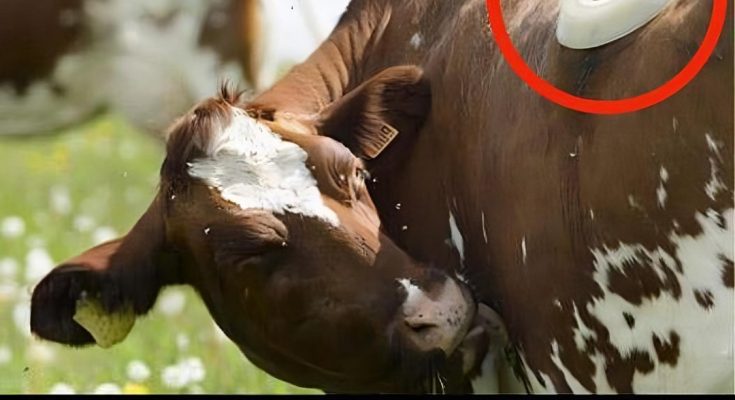When you hear the term “portholes,” you might think of small circular windows on ships or airplanes. However, in the world of agriculture and veterinary science, portholes have a very different meaning. Farmers and scientists have long used portholes, or cannulas, in cows as a way to study their digestion. While this practice may seem surprising or even bizarre to some, it plays a crucial role in advancing our understanding of livestock health and improving agricultural practices. In this article, we’ll explore what cow portholes are, why they’re used, and the controversies surrounding them.

What Are Portholes in Cows?
Cow portholes, also known as fistulas or cannulas, are surgically created openings that provide direct access to a cow’s stomach. Specifically, the porthole opens into the rumen, the largest of the cow’s four stomach compartments. These openings are fitted with a protective plastic ring, which keeps the hole accessible and allows scientists to easily reach the cow’s stomach contents.
The purpose of these portholes is to allow researchers to collect samples, monitor digestion, and even insert materials directly into the cow’s stomach without causing repeated stress or requiring constant sedation. This process has been used for nearly a century and is a vital tool for research on bovine nutrition, digestion, and health.
The History of Cow Portholes
The practice of installing portholes in cows dates back to the 1920s when scientists sought a better way to study how cows digest their food. Before portholes were developed, researchers had to perform more invasive and stressful procedures to understand a cow’s digestive system. The introduction of the porthole provided a safer and more efficient method to collect stomach samples.
By having a permanent access point, scientists could collect data more consistently, leading to better insights into how cows process different types of feed. Over the decades, portholes have become a common tool in agricultural research and have contributed to advances in animal nutrition, health, and farming efficiency.
Why Are Portholes Used in Cows?
Portholes allow farmers and scientists to access a cow’s rumen to study its digestion in real-time. Cows have a unique digestive system that involves breaking down tough plant fibers through microbial fermentation. The rumen, filled with bacteria and other microorganisms, plays a critical role in this process. Understanding what happens inside the rumen helps researchers make informed decisions about what types of feed are best for cows and how to optimize their diets for better health and productivity.
Benefits of Cow Portholes in Agriculture:
- Improved Animal Health: Researchers can monitor a cow’s digestion to identify any health issues early, ensuring better overall animal welfare.
- Optimizing Feed Efficiency: By understanding how cows digest different feeds, scientists can develop diets that promote growth, increase milk production, and improve overall efficiency in livestock farming.
- Environmental Impact Reduction: Cows emit gases like methane during digestion, contributing to greenhouse gases. Studying the rumen allows researchers to develop feeds that can reduce harmful emissions, leading to more eco-friendly farming practices.

How Do Portholes Work?
Once the porthole is surgically installed, it provides a direct route to the cow’s rumen. This opening allows researchers to collect samples of the cow’s digestive material without invasive procedures. The materials collected often include partially digested food, microbes, and gases, which offer valuable data on how cows process different types of feed. Additionally, researchers can introduce various substances, such as new feed ingredients, probiotics, or enzymes, to study their effects on the cow’s digestive health.
The porthole’s design ensures that the cow is not in pain or discomfort after the surgery, and the procedure is carefully monitored by veterinarians. The cow can continue to live a normal life, grazing, eating, and moving about just like any other cow.
Ethical Concerns and Criticisms
While portholes in cows are praised for their contribution to agricultural research, they also raise ethical concerns. Critics argue that installing a permanent hole in a cow’s body could cause harm or discomfort, and they question whether the benefits justify the procedure. Animal rights groups, in particular, have voiced concerns about whether cows can truly live a normal life with such modifications.

Supporters of the practice point out that the procedure is carried out under anesthesia, and the cow recovers quickly. The porthole does not cause long-term pain, and cows with portholes continue to graze and eat normally. Furthermore, the benefits of the research obtained from fistulated cows contribute to better animal welfare and more sustainable farming practices in the long run.
The Science Behind the Practice
Researchers rely heavily on the data collected from cows with portholes to make informed decisions that improve the entire livestock industry. Some key areas where portholes have contributed significantly include:
- Understanding Microbial Activity: Cows rely on bacteria in their rumen to break down food. Studying these bacteria helps researchers develop feed that encourages the growth of beneficial microbes, improving digestion and overall cow health.
- Maximizing Nutritional Intake: By observing how different feeds affect the digestion process, scientists can create diets that allow cows to absorb more nutrients from their food. This leads to healthier cows that produce more milk or grow more efficiently.
- Reducing Environmental Impact: Livestock farming is a significant contributor to methane emissions. By studying how cows digest their food, scientists can develop feeds that reduce methane production, leading to more environmentally friendly farming practices.
Controversy and Public Perception
The concept of portholes in cows can be shocking to those unfamiliar with agricultural research. Images of cows with portholes often provoke strong reactions, and the practice has been a point of controversy in discussions about animal welfare. However, it’s important to understand that this practice is regulated, and veterinarians closely monitor the cows’ health.

While critics argue that the procedure is invasive and unnecessary, proponents highlight the benefits it brings to animal health, sustainability, and overall agricultural efficiency. Public perception often hinges on understanding the broader goals of the research and the care taken to ensure the animals’ well-being.
Conclusion: The Surprising Role of Cow Portholes in Modern Agriculture
Cow portholes, or cannulas, may sound strange at first, but they play an essential role in advancing our understanding of bovine health and farming efficiency. By providing direct access to a cow’s stomach, these devices allow researchers to study digestion, improve feeding practices, and reduce environmental impacts from livestock farming. While there are ethical concerns surrounding the practice, the benefits to agriculture and animal welfare are significant.
Ultimately, portholes represent one of the many ways that science and technology are being used to improve the sustainability and productivity of modern farming. As research continues, this practice will likely remain a valuable tool in the pursuit of more efficient, environmentally friendly agriculture.



